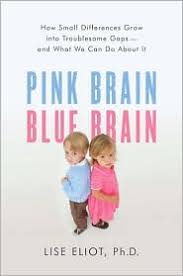 One of my  favorite new websites is www.sweetonbooks.com.  Founded, written, and edited by two book-loving moms who live in my hometown of Larchmont, New York, Sweet On Books offers children’s book recommendations for kids at all literacy levels, from picture books and short chapter readers to novels for middle-schoolers and beyond.  This appealing, user-friendly website is ideal for anyone on the lookout for top-notch children’s lit:  parents and kids obviously, but also teachers, librarians, grandparents, relatives, and friends.
One of my  favorite new websites is www.sweetonbooks.com.  Founded, written, and edited by two book-loving moms who live in my hometown of Larchmont, New York, Sweet On Books offers children’s book recommendations for kids at all literacy levels, from picture books and short chapter readers to novels for middle-schoolers and beyond.  This appealing, user-friendly website is ideal for anyone on the lookout for top-notch children’s lit:  parents and kids obviously, but also teachers, librarians, grandparents, relatives, and friends.
As described by co-founders Melissa Young and Melissa Gaynor, the website guides visitors through an annotated “virtual bookstore†showcasing books that might not be on a reader’s immediate radar or that they might not pick up on their own. The editors write all of the entries themselves, and they add new content every week.  While it’s hardly a comprehensive database, their lively reviews embody the principle of quality over quantity.  Beyond plot summary, each review offers an overall sense of the book’s quality and tone, and points out issues that could potentially arouse fear or anxiety in young readers. On a lighter note, each book is ranked on a “laugh meter†ranging from “not a comedy†to “giggles†to “can’t stop laughing.â€
The site is especially remarkable because it refuses to trade in the all-too-prevalent gender stereotypes that dominate children’s book publishing today.  When designing the site, Ms. Young and Ms. Gaynor chose a palette of light blue, chocolate brown, and burnt orange—and selected “gender-neutral†icons and images that would appeal to readers of both sexes. “We definitely wanted to avoid being perceived as a ‘girly site’ or a site that only boys or only girls would want to visit,†explains Ms. Young.  Occasionally, a review might mention a book’s potential appeal to “reluctant boy readers,†but in its basic structure, the site does not presume that readers for particular books will divide neatly along male-female lines.  (Ms. Young’s own kids, perhaps, have encouraged her to disregard conventional marketing wisdom.  In her household, 8-year-old Hannah has devoured all the books in the Diary of a Wimpy Kid series, while 4-year-old Sam can’t get enough of Fancy Nancy.)
In conversations with fellow parents and teachers, they discovered that many elementary-school kids seldom discriminate between “boy books†and “girl books,†and are “equally happy to read from both ends of the spectrum.â€Â  As Ms. Gaynor elaborated, “We try to recommend books that don’t follow typical stereotypes often found in children’s literature:  for example, books that have strong, positive relationships between boys and girls (Melonhead); non-traditional roles for boys and girls (Falling for Rapunzel, Keeping Score); and books with a main character that will appeal to both sexes (Tales of a Fourth Grade Nothing).â€
Of course, one website alone can’t change the gendered face of children’s publishing, but for now I’m pleased to report on a cultural space in which sex distinctions aren’t being mined, magnified, and marketed to sell things to kids.  On my own parenting “smile meter,” that scores a big grin indeed.




